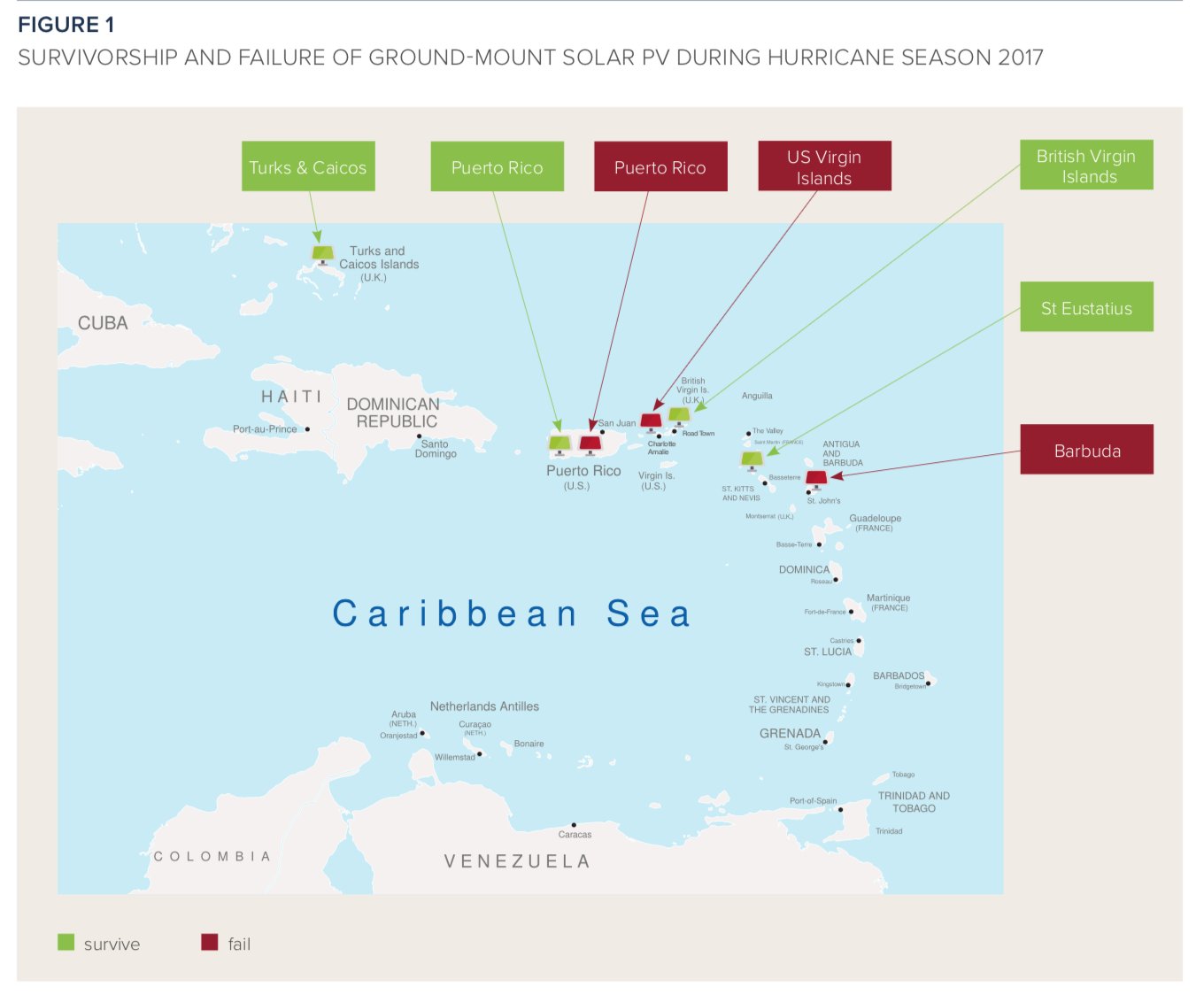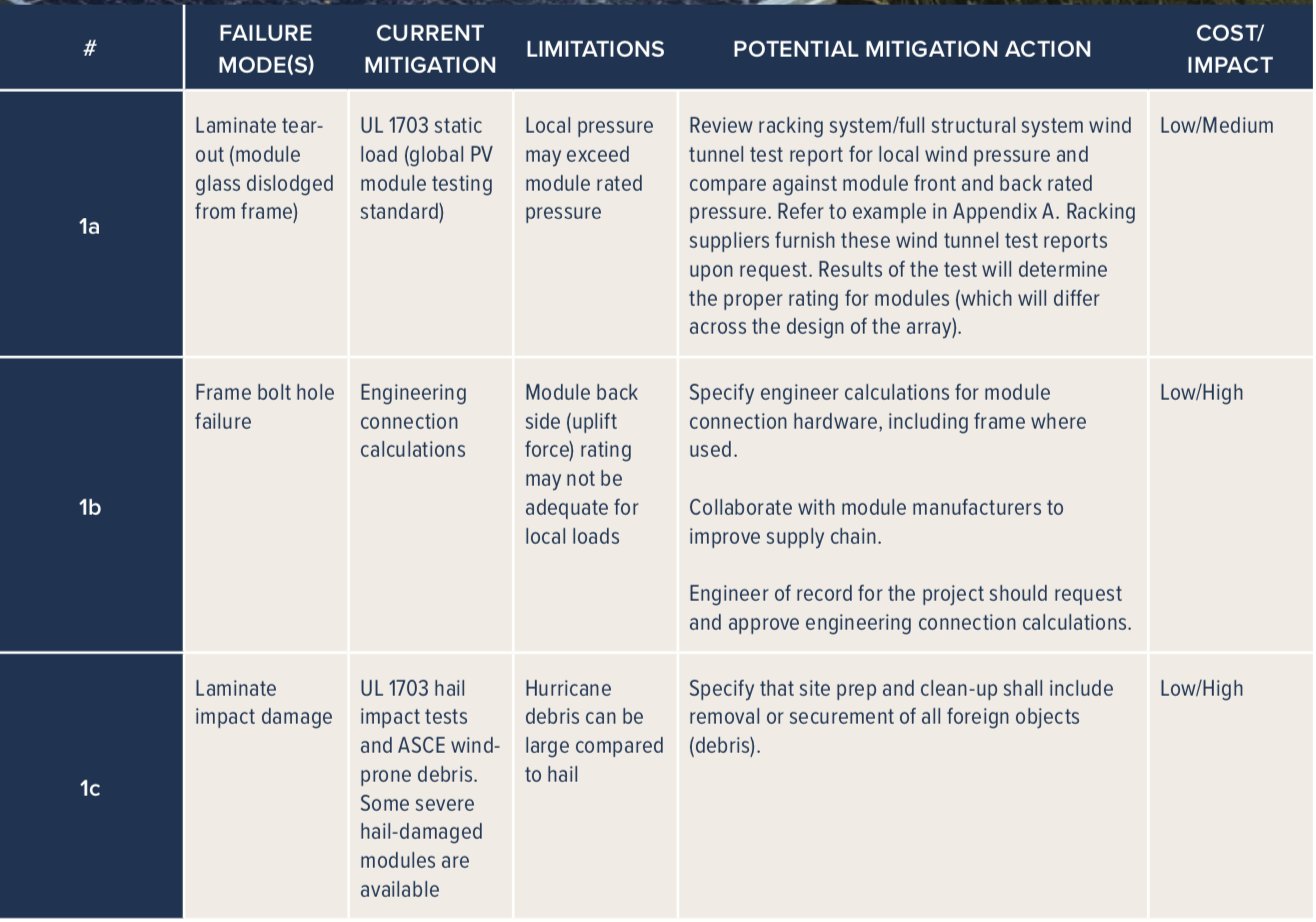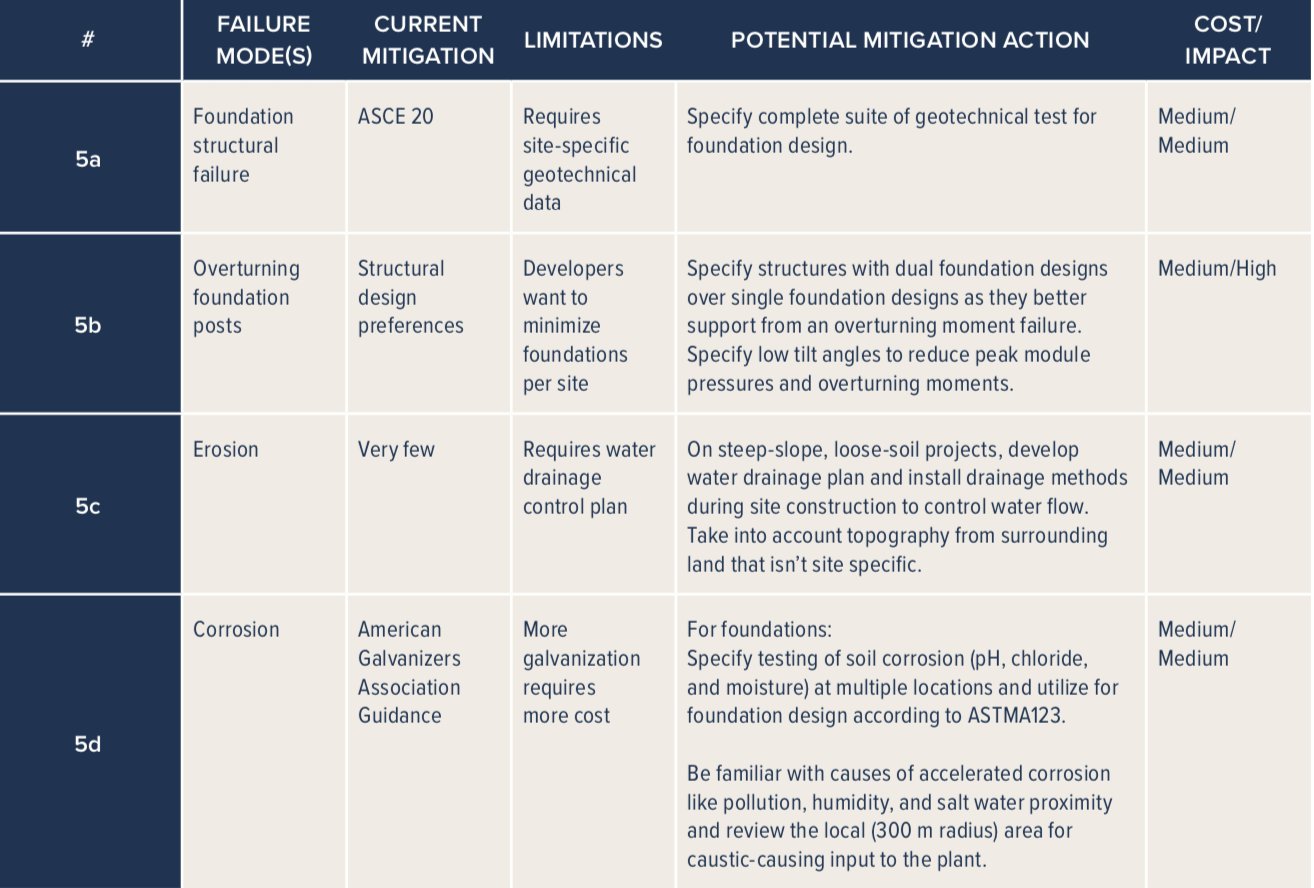Nine months after Hurricane Maria, Puerto Rico’s electric authority is still working to fully re-energize the island. Researchers place the storm’s death toll in the thousands. And experts suggest it will take years, if not a decade, for the island’s energy system to fully recover.
But energy experts in Puerto Rico and the U.S. mainland continue to debate what the electric system should look like and to what extent it could withstand extreme weather.
That’s led to reports, including one from the Rocky Mountain Institute and the Federal Emergency Management Agency, looking to quantify the damage and improve installation practices for solar PV. They’ve found that the 180 mile per hour winds that rushed in with the 2017 Atlantic hurricane season in some cases ripped solar arrays from their racking and smashed modules. But other systems fared well, able to produce energy the day after the storm passed.
 Rocky Mountain Institute
Rocky Mountain Institute
An analysis of four ground-mount systems from RMI showed that installations in Turks & Caicos, the British Isles and Puerto Rico made it through the storms. But some arrays in Puerto Rico also sustained damage, along with systems in the U.S. Virgin Islands and Barbuda — all which experienced significant humanitarian tolls as well.
“We were very curious as to, was this just sheer Mother Nature’s luck? Or were there some underlying reasons why some ground-mount systems survived 180 mile-per-hour-plus winds?” said Chris Burgess, project director of the Islands Energy program at RMI.
The varied impacts, geography and maintenance of systems across the Caribbean make it difficult to create generic recommendations for what a resilient, storm-ready PV system looks like. But RMI did gather some recommendations based on ground observations and analysis of current systems.
Burgess said the success of systems came down to two factors: design and fastening. Systems that were designed for their location and had proper clamping held up even in Category 5 winds.
For systems that failed after Hurricanes Irma and Maria, RMI found undersized and under-torqued bolts, undersized racks or those not designed for high winds, and connections between module and racking that were not vibration-resistant. Many systems had adequate bracing to withstand from above and below, but not the lateral winds from large-scale storms like Maria and Irma.
Some system design was simply not adequate for the environments in which they were installed.
Successful systems, on the other hand, had dual-post piers, through bolting, lateral racking, and vibration-resistant bolted connections.
The Caribbean already has 225 megawatts of distributed and utility-scale solar, with over half of the region’s utilities hosting solar in their generation mix. That capacity will undoubtedly increase as islands move from recovery to resilient rebuilding. All of the future energy plans for Puerto Rico include renewables, and solar specifically, as a keystone of the island’s energy system.
RMI broke its recommendations down further to ensure that these future systems can withstand stronger and more frequent storms brought about by climate change.
In the sites RMI investigated, Burgess said the organization saw very little module failure. Inadequate bolting played a larger role in causing damage to solar arrays. But if bolting practices improve, and island installers don’t also source modules at the 5,400 pascal level as well, the number of shattered modules observed may increase because of winds causing damage from above and below.
“We think that Category 5 wind loads can be endured by these systems, if certain mitigation measures are taken,” Burgess said. “A lot of that starts with procurement, making sure you’re ordering the right modules that have the right pascal rating for uplift and down.”
Currently, 2,400 pascal uplift PV modules are standard, but Burgess said several Tier 1 manufacturers including Canadian Solar and GCL Solar sell the stronger 5,400-rated modules.
Recommendations for PV Module Frame and Laminate
 Rocky Mountain Institute
Rocky Mountain Institute
In its recommendations on module frames, RMI also suggests cleaning up hurricane debris as soon as possible because some module damage was caused by falling objects, including trees.
To make sure racking performs at the highest standard, RMI assessed the foundation in which racking was placed as well as its attachment to modules.
Recommendations for Racking Foundations
 Source: Rocky Mountain Institute
Source: Rocky Mountain Institute
The organization recommended a design that factors in soil type, erosion of land, and corrosion of the metal from humidity and salt water.
Through-bolting of the racking to modules minimizes vibration and strengthens the entire system, minimizing the chance that panels will come loose or that failure will cascade throughout the system. Burgess said that without rack failure or module loosening, it can be easy to replace modules one-for-one if an impact event takes one out. Racking should also compensate for lateral winds and not just winds from above and below.
For balance-of-system pieces, RMI recommended that bolts are torqued and un-corroded. Bolts should be right-sized and able to withstand 25 years or more of the elements. Through-bolting is also better than clamping, but if a system requires clamping it should be clamps that hold each module individually for added security.
Recommendations for Balance-of-System Components
 Rocky Mountain Institute
Rocky Mountain Institute
The report also said areas with Category 4 or higher winds expected should avoid using trackers.
Ultimately, RMI said that a collaborative group of PV stakeholders should share knowledge about extreme weather design to make sure systems are built in accordance with their environment.
“You want to make sure you’re designing the system for the site, and not just a neutral location,” Burgess said. “And then, proper workmanship and fastening goes a long way.”
According to Burgess, best practices for installing PV will become increasingly important as more islands turn to renewables — and specifically distributed solar — to take over for oil-heavy generation capacity.
For building load at critical infrastructure, Burgess said distributed solar PV-plus-storage can create a more resilient grid than centralized generation or distributed fossil fuel sources.
“Obviously, a big 20-megawatt solar farm is important for the grid during normal hours, but that isn’t anything special or different from a diesel generator because it is dependent on the transmission and distribution system,” said Burgess. “We really wanted to emphasize in this report that solar is a reliable and resilient source of energy not just for utilities, but for homes, business and particularly critical infrastructure. I think that’s the difference maker.”